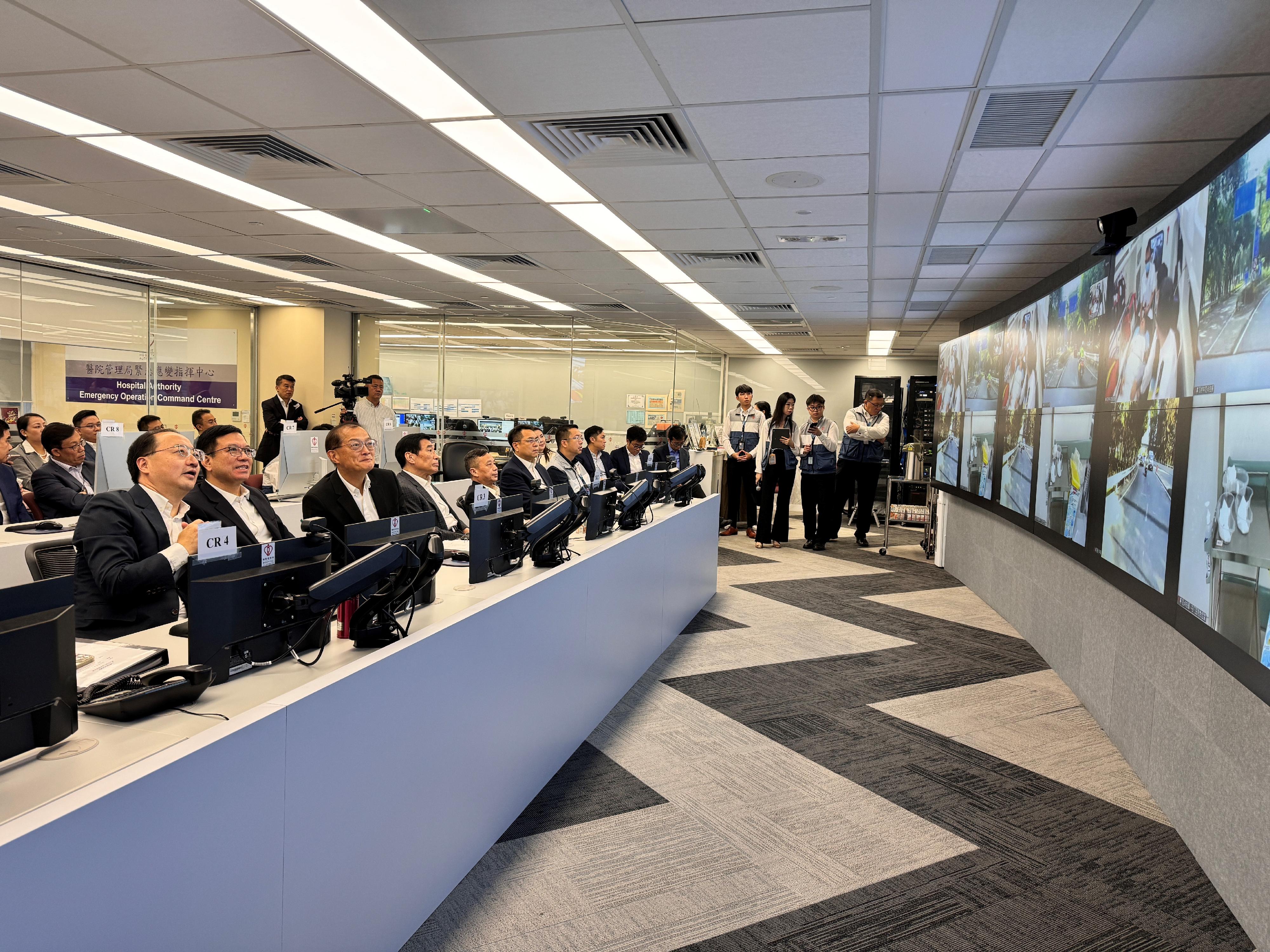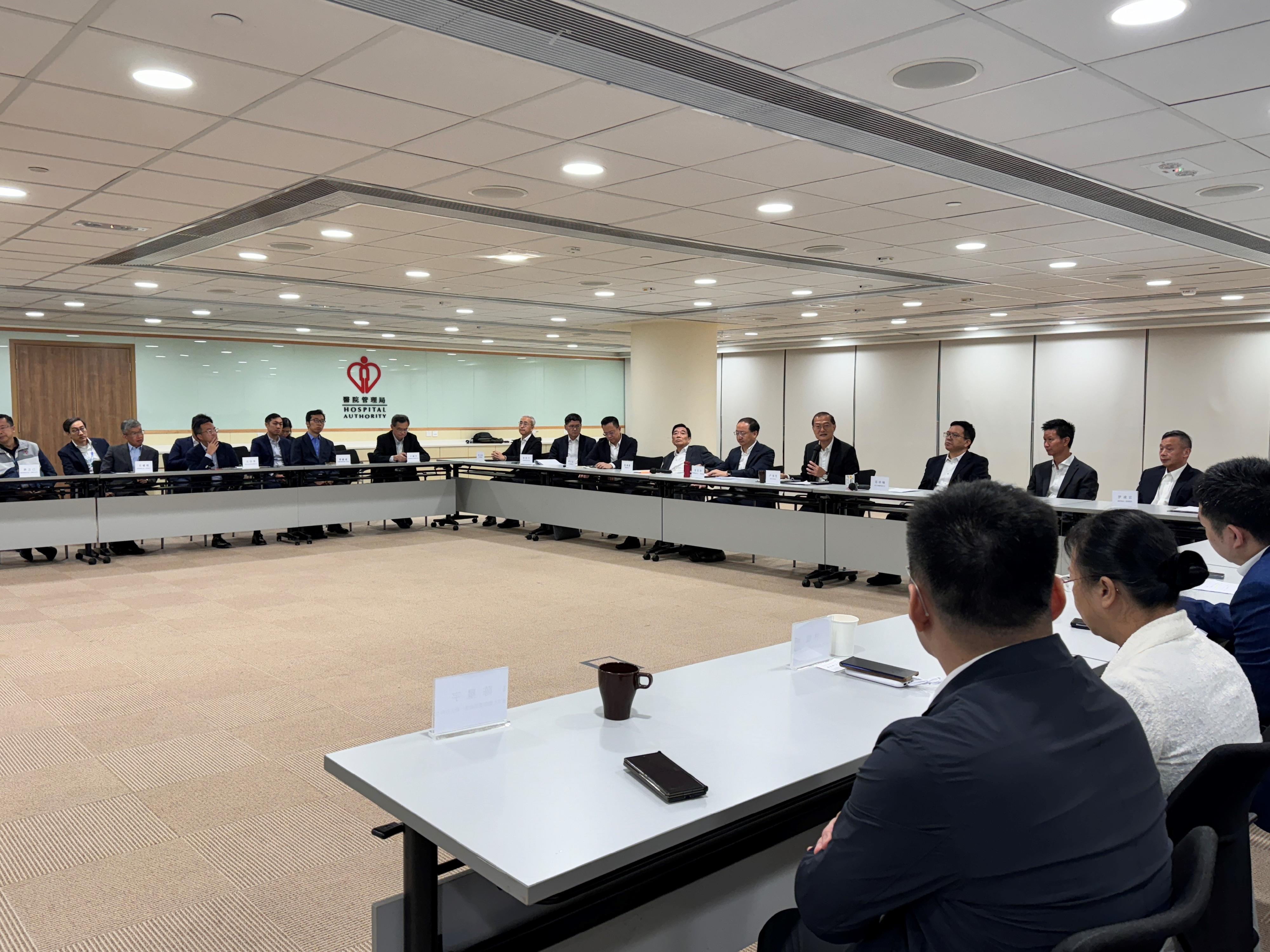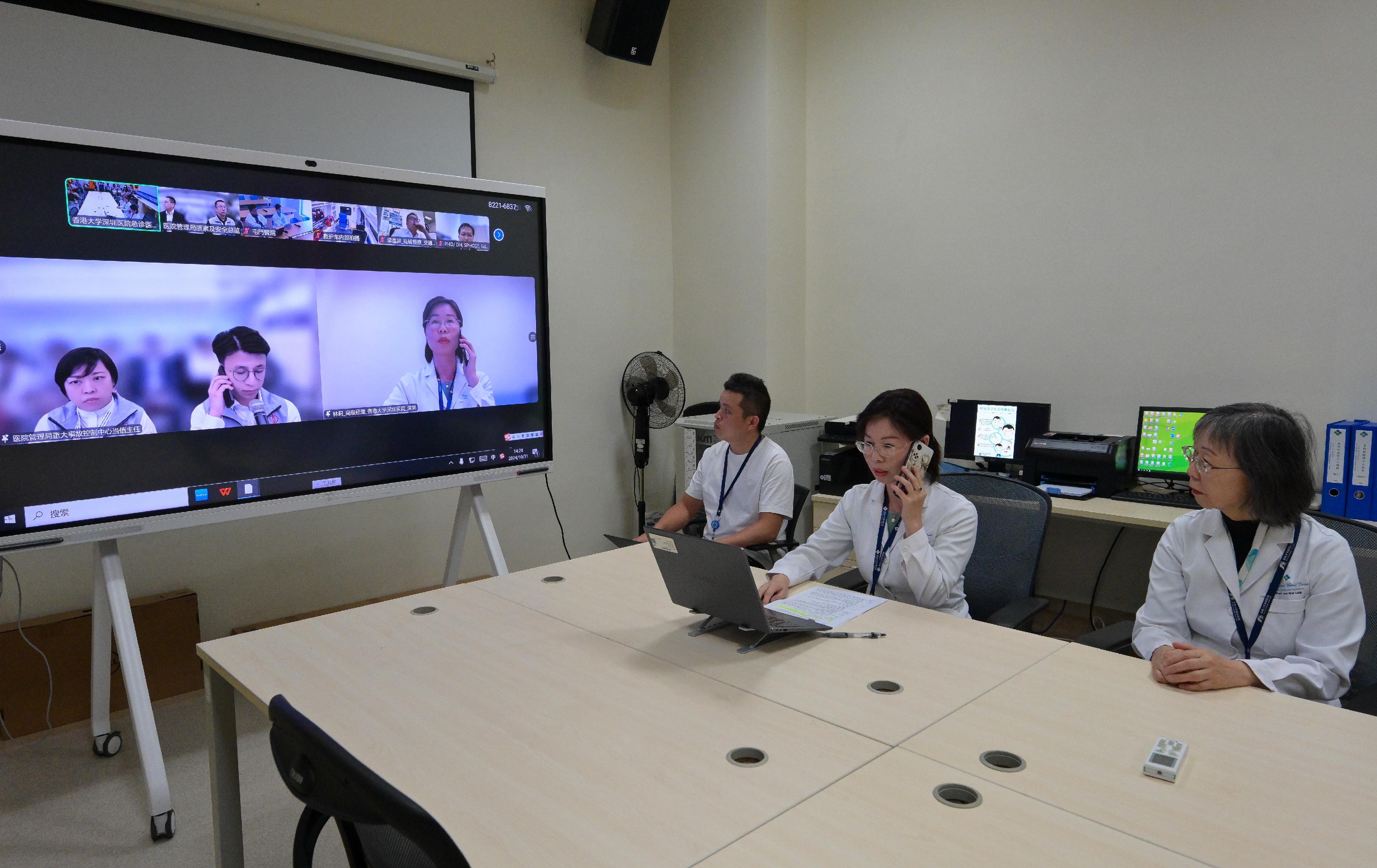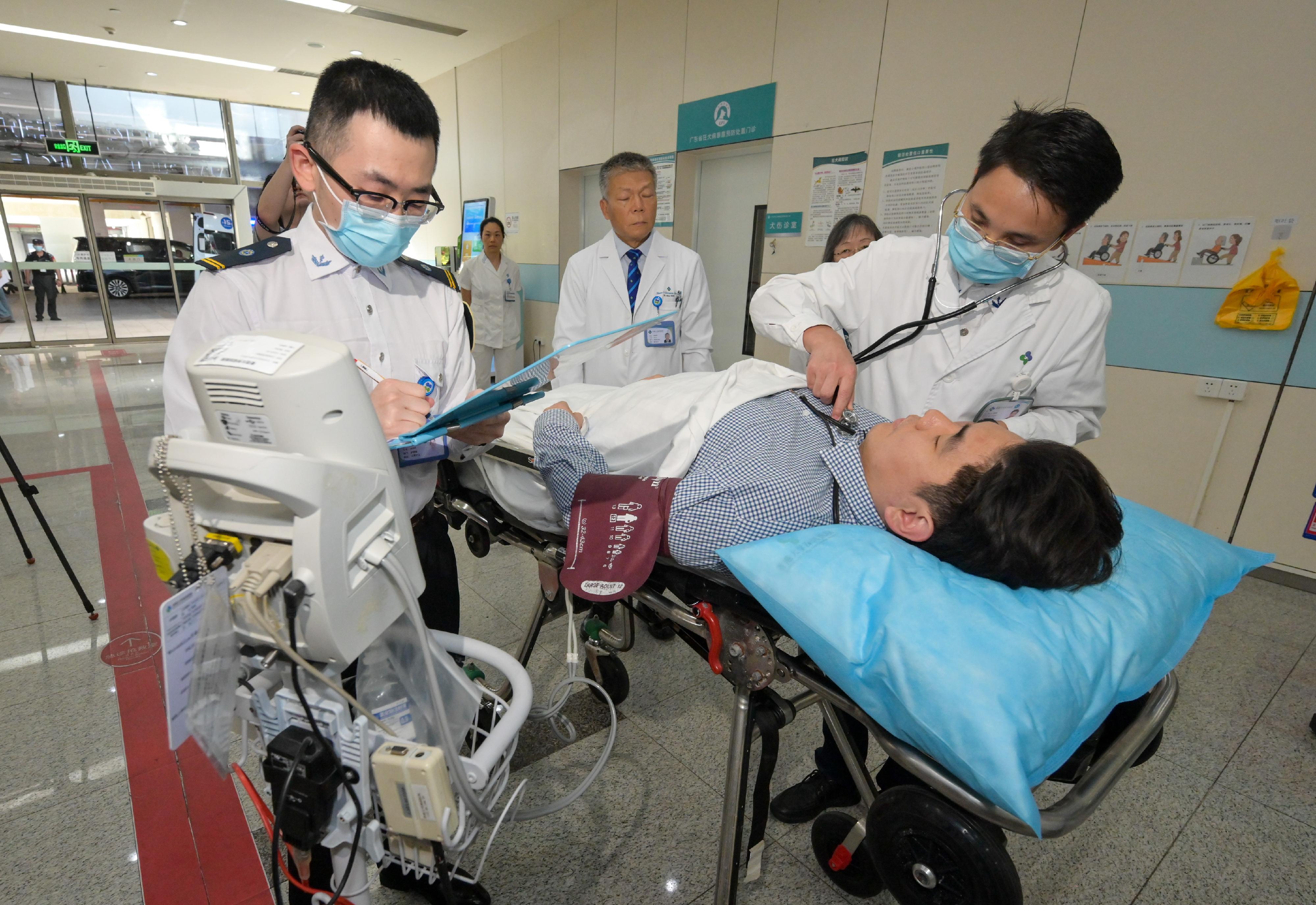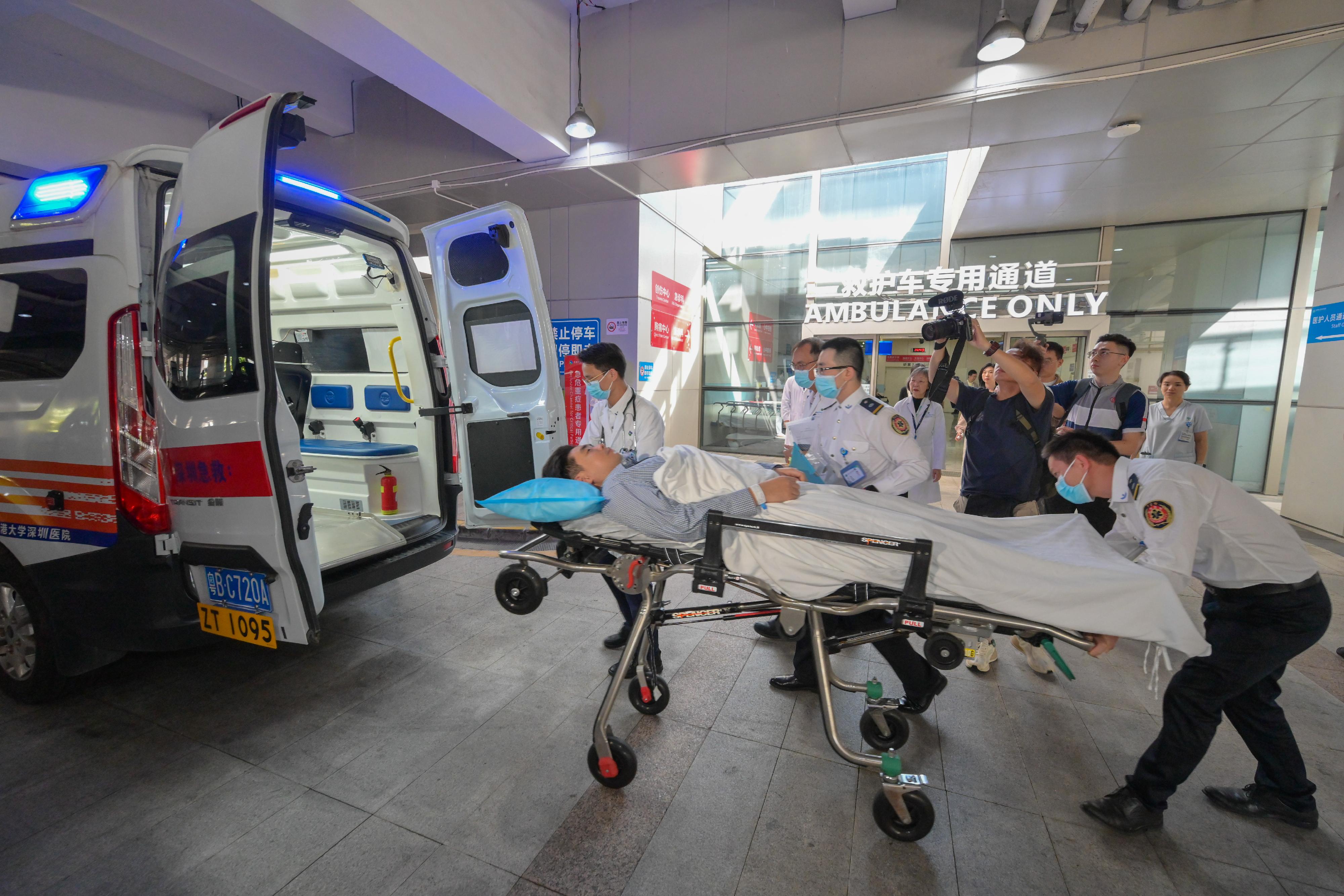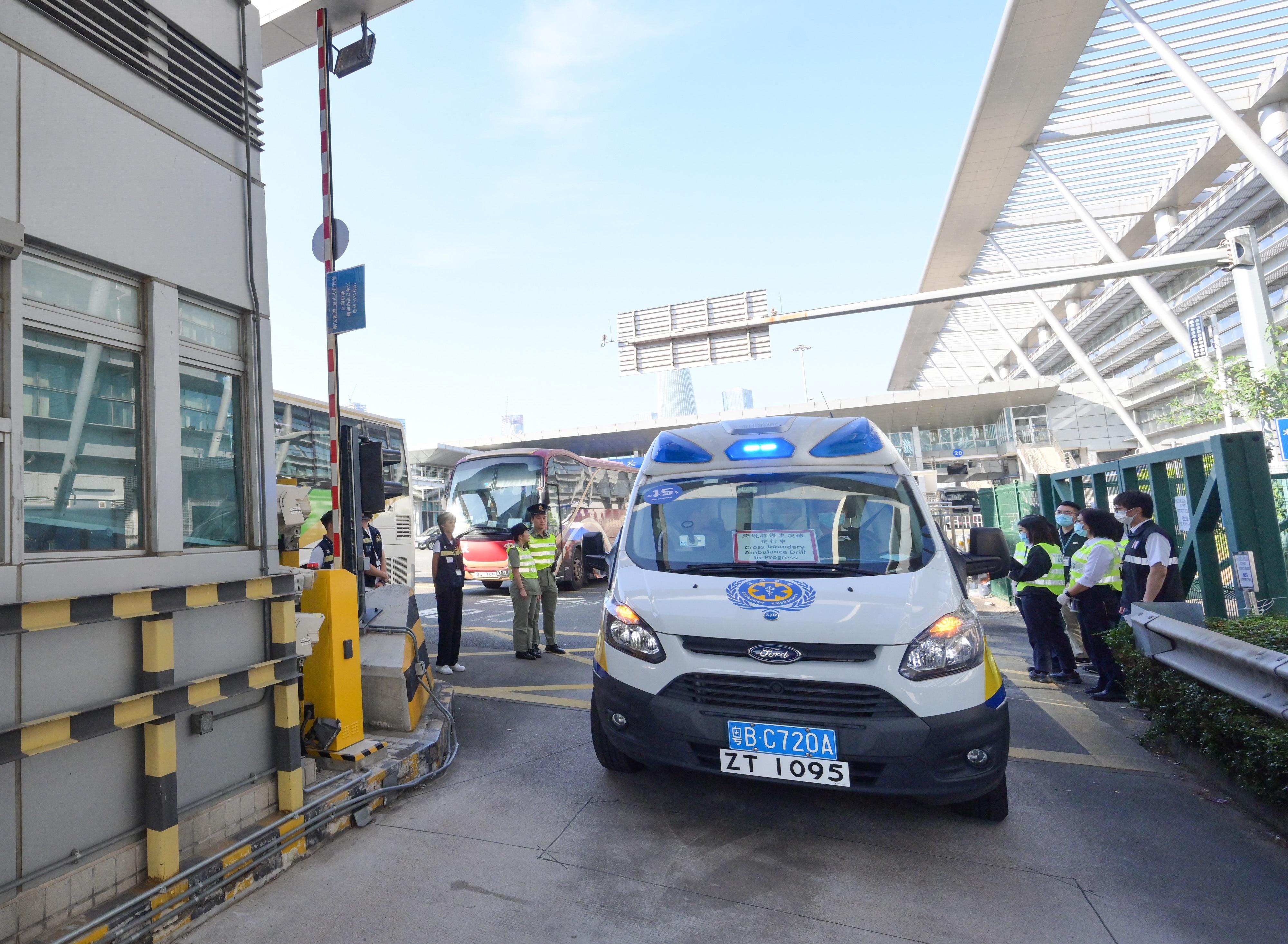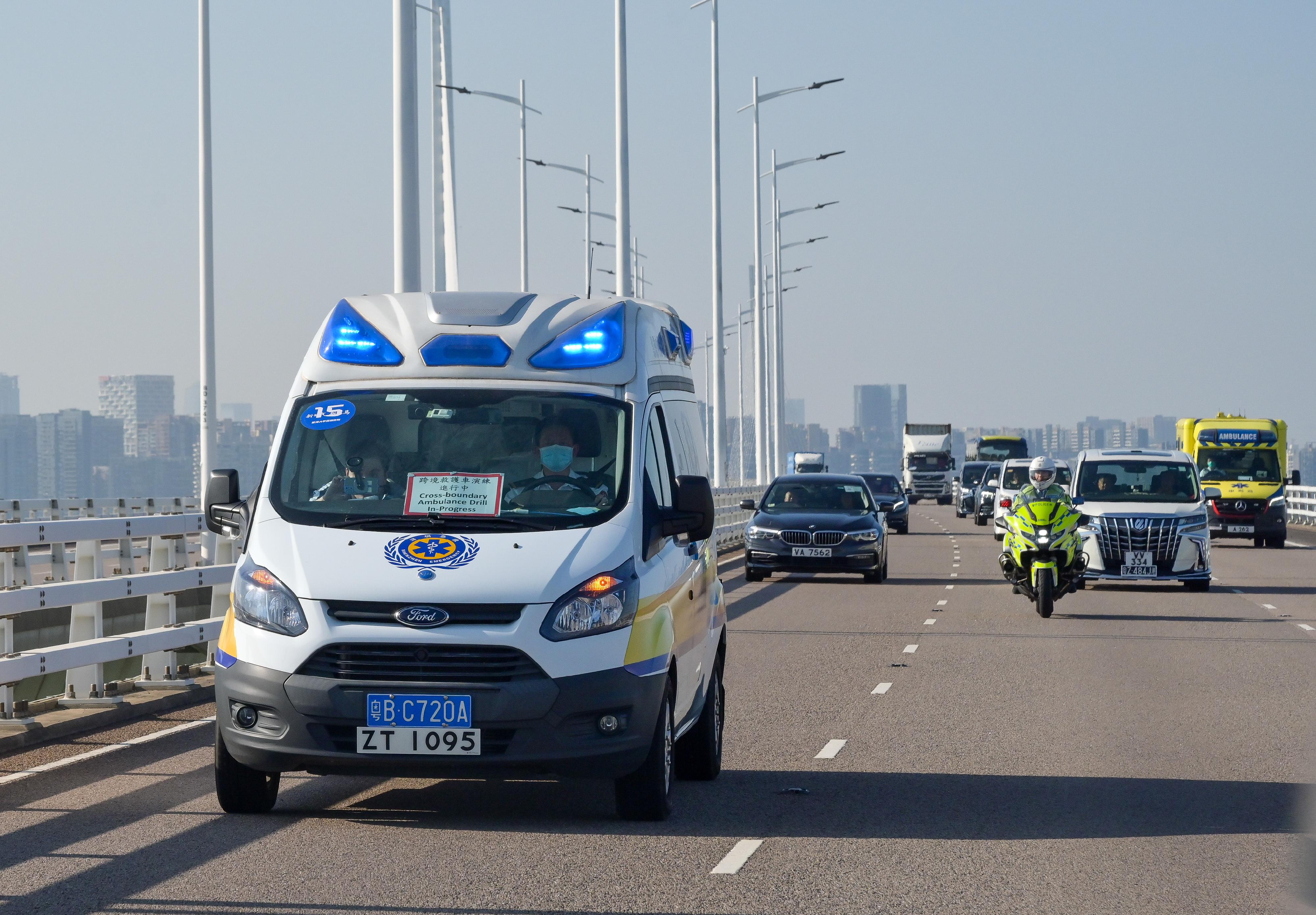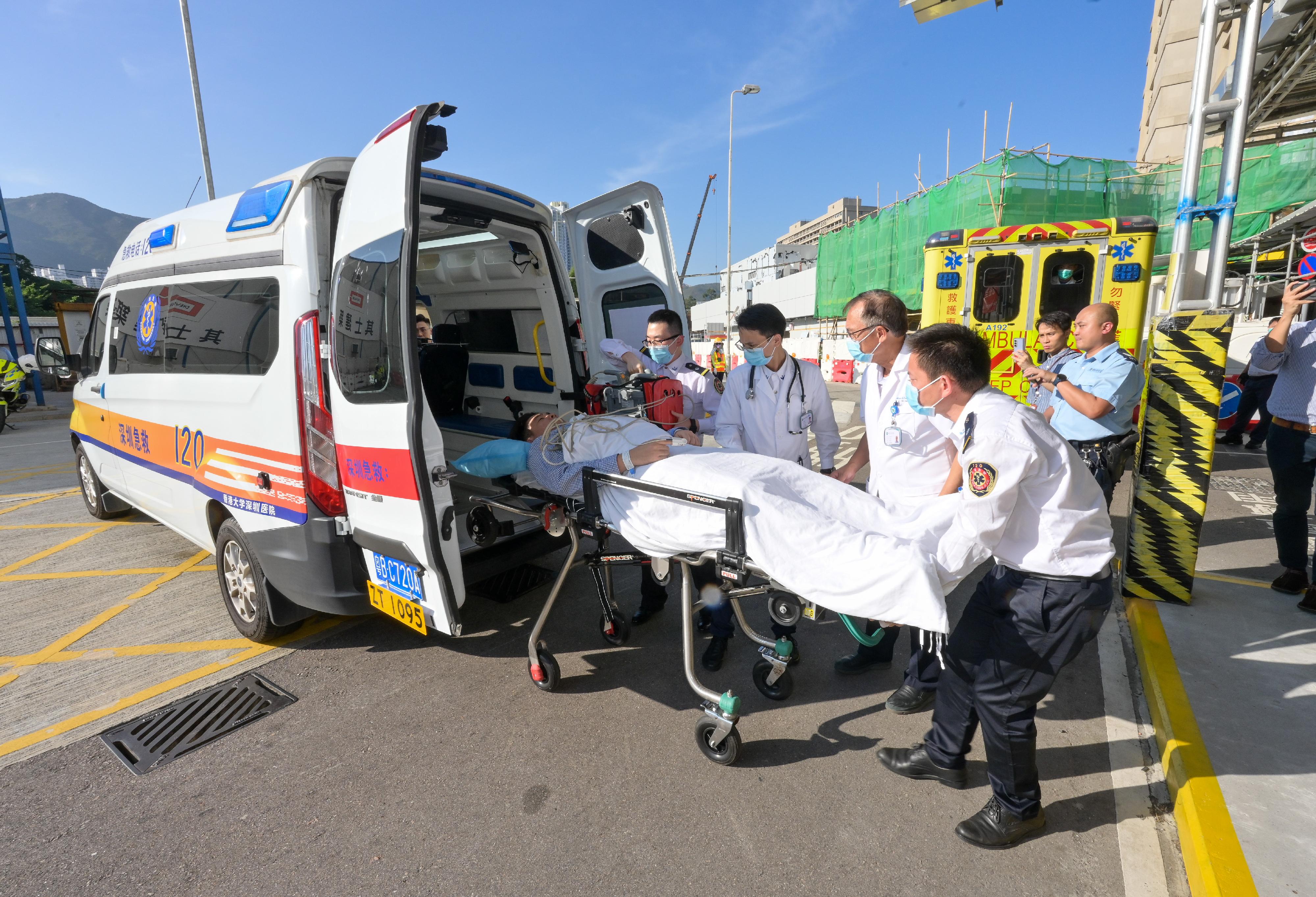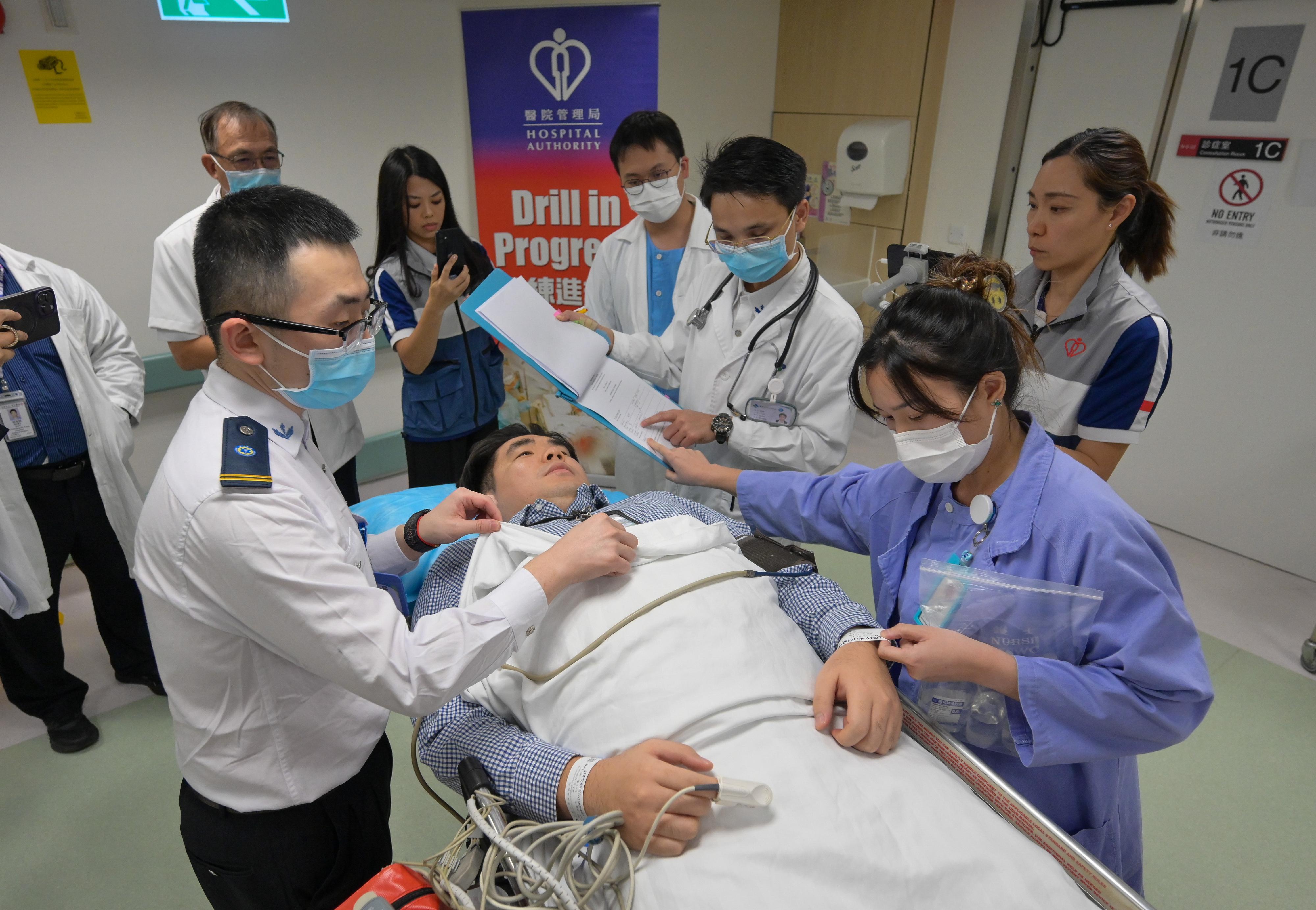The Hong Kong Special Administrative Region (HKSAR) Government today (October 31) conducted the second drill for the Pilot Scheme for Direct Cross-boundary Ambulance Transfer in the Greater Bay Area (Pilot Scheme) in collaboration with the Guangdong Provincial Government and the Shenzhen Municipal Government to observe the simulated transfer of a patient by a cross-boundary ambulance. The drill was conducted smoothly and the Pilot Scheme is expected to launch next month.
The Secretary for Health, Professor Lo Chung-mau, together with Deputy Director-General and Level I Bureau Rank Official of the Hong Kong and Macao Affairs Office of the People's Government of Guangdong Province Mr Zhang Zhihua, Deputy Director-General of the Health Commission of Guangdong Province Mr Deng Linfeng, Deputy Director of the Public Hygiene and Health Commission of Shenzhen Municipality Mr Li Jieyun, and Inspector at Level 2 of Shenzhen Customs District Mr Luo Lingyun inspected the drill at the Major Incident Control Centre of the Hospital Authority (HA). The Chairman of the HA, Mr Henry Fan, and the Chief Executive of the HA, Dr Tony Ko, joined as well. After the drill, they attended the Guangdong-Shenzhen-Hong Kong inter-departmental meeting and listened to reports from relevant representatives of the HKSAR Government, the Guangdong Provincial Government and the Shenzhen Municipal Government on the flow of the drill.
Professor Lo said, “With the further integration of the Guangdong-Hong Kong-Macao Greater Bay Area (GBA) and more frequent travelling of the residents therein, we are launching the cross-boundary ambulance direct transfer arrangement to address an issue of public concern for years. For the successful implementation of the direct cross-boundary ambulance transfer arrangement, I would like to express my heartfelt gratitude to various national ministries, including the Hong Kong and Macao Affairs Office of the State Council, the National Health Commission and the General Administration of Customs of the People's Republic of China for their support and guidance. I would also like to thank various authorities of the Guangdong Provincial Government and the Shenzhen Municipal Government for their concerted efforts and sending a delegation to Hong Kong to join us today for the inspection of the drill to refine and finalise details of the relevant arrangements for the Pilot Scheme. In addition, I would like to extend my gratitude to a number of Government bureaux and departments of the HKSAR Government, including the Security Bureau, the Transport and Logistics Bureau, the Hong Kong Police Force, the Customs and Excise Department, the Immigration Department, the Department of Health, and the Transport Department, for their full co-operation.
“Through the concerted efforts of various parties, the governments of the three places have finalised the mechanism and procedures for the direct cross-boundary ambulance transfer in the GBA. We are confident that the Pilot Scheme can be launched next month to provide ‘point-to-point’ transfer arrangement between designated hospitals for patients with specific clinical needs. By then, the medical collaboration in the GBA can be further enhanced and patients can be transferred in a safer, more timely and convenient manner.”
"The direct cross-boundary ambulance transfer arrangement in the GBA concerns not only patients' safety but also cross-boundary travelling of vehicles, healthcare personnel, medication and devices as well as dangerous goods for medical use, etc. This requires collaboration across various government departments of Guangdong and Hong Kong as well as harmonisation of rules and mechanisms among the GBA cities to ensure safety for entry or exit and quarantine. The HKSAR Government will keep deepening collaboration with other GBA cities to further actualise the healthcare integration of the GBA."
Mr Deng said that the launch of direct cross-boundary ambulance transfer services in the GBA is a significant initiative in implementing the Outline Development Plan for the GBA. Under the unremitting efforts of the three places, substantial progress has been achieved and this drill was a final comprehensive simulation taken into account the real circumstances. The upcoming Pilot Scheme will provide GBA residents with more convenient, high-quality and efficient medical transfer services. Looking ahead, he anticipated the further deepening of collaborations between Guangdong and Hong Kong through better harmonisation of rules and mechanisms, with a view to promoting the high-quality development of ‘Healthy Bay Area’.
Having obtained the quota for cross-boundary ambulances of Guangdong and Hong Kong, the Shenzhen ambulance participating in the drill today can travel between Hong Kong and Shenzhen with dual license plates of the Mainland and Hong Kong, further streamlining the actual operation and procedures for the direct ambulance transfer.
The Pilot Scheme is limited to transfers between designated hospitals with the first phase focusing on the arrangement of direct ambulance transfer of patients from designated hospitals in Shenzhen and Macao to designated public hospitals in Hong Kong. The cross-boundary ambulance mechanism will only be activated when a prior agreement between the sending hospital (i.e. the University of Hong Kong – Shenzhen Hospital or the Conde S. Januario Hospital of Macao) and the receiving hospital (i.e., designated public hospitals under the HA of Hong Kong) has been reached in advance, taking the clinical needs, safety and interests of patients as the prime concerns, and having a mechanism in place to avoid abuse while ensuring the safety of cross-boundary transfer. Subject to the effectiveness and operational experience of the launch of the Pilot Scheme, the HKSAR Government will consider the arrangement for the next phase of the Scheme.
Follow this news feed: East Asia






